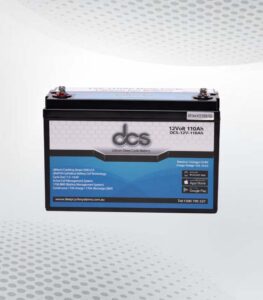Are you the proud owner of a 24v Battery Lifepo4? If so, you’re likely aware of its incredible benefits for powering everything from electric vehicles to solar energy systems. These batteries are known for their long lifespan and high efficiency, but they require proper care like any technology. Understanding how to charge and maintain your 24V battery safely can significantly enhance its performance while extending its life. Whether you’re new to lithium iron phosphate (LiFePO4) technology or looking to optimize your charging routine, this guide provides essential tips and best practices.
Understanding the Basics: How 24V LiFePO4 Batteries Work
24V LiFePO4 batteries are a type of lithium-ion battery known for their stability and safety. They use lithium iron phosphate as the cathode material, offering a longer lifespan than traditional lithium batteries. This chemistry allows for high discharge rates while maintaining thermal stability.
The nominal voltage is 3.2 volts per cell, with eight cells wired in series to create the 24-volt configuration. These batteries excel in applications requiring deep cycling, such as renewable energy systems or electric vehicles. Their efficiency minimizes energy loss during charging and discharging cycles.
One standout feature of LiFePO4 technology is its ability to endure more charge-discharge cycles without significant degradation. This longevity makes them cost-effective and reduces the need for frequent replacements in various setups. Understanding these basics sets the stage for effective maintenance and safe usage.
Essential Safety Guidelines for Charging LiFePO4 Batteries
LiFePO4 (Lithium Iron Phosphate) batteries are widely used for their safety, longevity, and efficiency. Like all batteries, they require proper care during charging to ensure safe operation. Following the appropriate charging practices helps avoid hazards like overheating, short circuits, or reduced battery life. These essential safety guidelines will help you charge your LiFePO4 batteries safely.
Use the Correct Charger for LiFePO4 Batteries
Always use a charger specifically designed for LiFePO4 batteries. These chargers are built to provide the proper voltage and current, ensuring safe charging without overcharging or undercharging. Using an incompatible charger can lead to battery damage, overheating, or fire hazards.
Charge in a Well-Ventilated Area
While LiFePO4 batteries are safer than other lithium-based batteries, charging them in a well-ventilated area is still important. Charging can generate heat, and proper airflow helps dissipate it, reducing the risk of overheating. Avoid charging in confined spaces like closets or under blankets.
Monitor Charging Voltage and Current
LiFePO4 batteries have a specific charging voltage range, usually around 3.6V per cell (for a 12V battery, 14.6V total). Ensure the charger matches the battery’s voltage specifications. Overcharging beyond this voltage can damage the battery, while undercharging may prevent the battery from reaching its full capacity.
Avoid Charging at Extreme Temperatures
Charging LiFePO4 batteries at too high or too low temperatures can damage the battery and reduce its lifespan. The optimal charging temperature is between 0°C and 45°C (32°F and 113°F). Avoid charging in direct sunlight, in hot cars, or during extremely cold weather, as these can compromise the battery’s safety and performance.
Recommended Charging Equipment for 24v Li Battery
Choosing the correct charging equipment for your 24v Li Battery is crucial. A high-quality charger designed for lithium batteries ensures optimal performance and safety. Look for a smart charger that automatically adjusts voltage and current based on battery needs.
A good charger should include over-voltage protection, short-circuit protection, and temperature monitoring. These safeguards help prevent common issues during charging, extending the life of your battery. Additionally, chargers with built-in Battery Management Systems (BMS) should be considered to manage cell balancing efficiently.
Always check compatibility before purchasing a charger. Make sure it’s rated for 24V batteries and can handle the capacity of your specific unit. Investing in reliable equipment ensures safe operation while maximizing efficiency during each charge cycle.
The Role of a Battery Management System (BMS) in LiFePO4 Maintenance
A Battery Management System (BMS) is essential for maintaining the health of your 24V LiFePO4 battery. It monitors critical parameters such as voltage, current, and temperature to ensure safe operation. By collecting real-time data, a BMS helps prevent overcharging and deep discharges that can damage the cells.
Moreover, a BMS balances the charge across individual cells within the battery pack. This balancing process enhances performance and longevity by ensuring all cells maintain similar voltage levels. Uneven charging can lead to reduced capacity and early failure of weaker cells.
Additionally, many modern BMS units come equipped with communication features. They allow users to track battery status via smartphones or computers, providing insights into overall efficiency. This level of monitoring empowers users to make informed decisions about their energy management strategies.
Charging Do’s and Don’ts for 24V LiFePO4 Batteries
When charging your 24V LiFePO4 battery, always use a charger specifically designed for lithium batteries. This ensures compatibility and safety throughout the process. Ensure the charger’s output matches the battery requirements to avoid performance issues.
Avoid exposing your battery to extreme temperatures during charging. Hot or cold conditions can affect efficiency and lifespan. Ideally, charge in a climate-controlled environment where temperature fluctuations are minimal.
Never leave a charging battery unattended for long periods. While most modern chargers have built-in protections against overcharging, it’s best practice to monitor progress regularly. Disconnect as soon as charging is complete to enhance longevity and maintain optimal performance of your 24V LiFePO4 battery.
Temperature Considerations: Charging Safely in Hot and Cold Conditions
Temperature plays a crucial role in the performance and lifespan of your 24V LiFePO4 battery. Charging in extreme heat can lead to overheating, which might damage internal components. For optimal results, you should charge these batteries at room temperature, around 20°C to 25°C (68°F to 77°F).
When temperatures drop below freezing, charging becomes less effective. Cold conditions increase internal resistance, leading to incomplete charging and potential capacity loss. Warming up the battery before connecting it to a charger helps maintain efficiency during charging.
Constantly monitor your battery’s temperature while charging. Investing in thermal protection or insulation can also be beneficial in maintaining an ideal environment for your battery pack. Keeping these considerations top-of-mind ensures that your investment lasts longer with maximum efficiency.
Using Solar Chargers for 24V LiFePO4 Batteries: Tips and Tricks
Using solar chargers for your 24V LiFePO4 batteries can be a game-changer, especially if you want to go green. Start by selecting a solar charger designed specifically for lithium batteries. These chargers optimize charging efficiency and protect against overvoltage.
Position your solar panels where they receive maximum sunlight throughout the day. Adjust their angle based on the season and time of day to capture more energy. Regularly check for debris or obstructions that might block sunlight.
Monitor your battery’s charge during sunny days to ensure it doesn’t exceed recommended limits. A good quality charge controller is essential here, as it regulates voltage and current effectively, keeping your battery safe while harnessing that beautiful free solar power.
Storing Your Battery Safely: Avoiding Deep Discharge During Storage
When storing your 24V LiFePO4 battery, it is crucial to keep it at an optimal charge level. Ideally, you should store the battery with a state of charge between 30% and 50%. This range helps prevent deep discharge, which can lead to irreversible damage.
Choose a cool and dry environment for storage. Extreme temperatures can negatively affect the battery’s chemistry and performance. Aim for moderate conditions—around room temperature is often best.
Regularly check the battery’s voltage during long-term storage. If it drops below the recommended threshold, recharge it promptly to maintain health. Taking these precautions will significantly prolong your battery’s lifespan while ensuring it’s ready when needed.
Preventing Overheating While Charging Lithium Ion 24v
Overheating is a common issue when charging Lithium Ion 24v. Excessive heat can damage the batteries, reduce efficiency, and shorten battery life. Always use the recommended charger specifically designed for your battery type to prevent overheating.
Charge your battery in a cool, well-ventilated area to help dissipate heat effectively. Avoid placing it in direct sunlight or near other heat sources during charging. Regularly check the charger’s and battery’s temperature; if either becomes too hot to touch, disconnect immediately.
Monitoring the voltage levels while charging is also crucial. Ensure you stay within the optimal voltage range specified by the manufacturer. These precautions allow you to maintain safe operating temperatures and enhance your 24V Lithium-ion system’s longevity and performance.
How to Balance Cells in a 24V LiFePO4 Battery Pack
Balancing cells in a 24V LiFePO4 battery pack is essential for optimal performance and longevity. When cells are mismatched, uneven charging and discharging can occur, ultimately shortening the battery’s lifespan. Regular balancing helps ensure that each cell within the pack charges evenly.
To balance your cells, check their voltage levels using a multimeter. Identify discrepancies between them; ideally, all should be around the same voltage. If you find significant differences, use a dedicated battery balancer or module explicitly designed for LiFePO4 batteries.
During balancing, monitoring temperatures closely is crucial, as overheating can damage cells. Always work in a well-ventilated area and avoid leaving the process unattended. By maintaining balanced cells, you’re prolonging your battery’s life and ensuring reliable power delivery when you need it most.
The Impact of Charging Speed on Battery Longevity
Charging speed plays a crucial role in the longevity of your LiFePO4 battery. Fast charging may seem convenient, but it can increase heat and stress on the battery cells. This added strain can shorten lifespan and reduce overall efficiency.
Conversely, slower charging rates typically promote better health for lithium batteries. By allowing more time for electrons to move within the cells, you minimize wear and tear. It’s essential to strike a balance that meets your usage needs while maintaining optimal performance.
When using fast chargers, monitor temperatures closely during the process. Elevated temperatures not only affect immediate performance but also contribute to long-term degradation. Understanding this relationship between charging speed and battery health is vital for maximizing the lifespan of your 24V LiFePO4 battery system.
Conclusion
Maintaining and charging your 24v Battery Lifepo4 requires attention to detail. When you follow proper guidelines, you can enhance its lifespan and efficiency. Understanding the nuances of charging, monitoring cycles, and temperature considerations is vital for optimal performance. Staying informed about safety precautions will ensure a smooth operation. Whether using standard chargers or solar options, knowing what equipment works best is essential in preventing damage.
FAQs
What is the lifespan of a 24v Battery Lifepo4?
When properly maintained, a 24v Battery Lifepo4 typically lasts between 2,000 and 5,000 charge cycles. Factors like temperature and charging habits greatly influence longevity.
Can I use my standard charger for a 24V LiFePO4 battery?
It’s best not to use standard chargers designed for other types of batteries. Always opt for chargers specifically made for LiFePO4 technology to ensure safe and efficient charging.
How do I know if my BMS is functioning correctly?
A well-functioning Battery Management System will balance cell voltages and prevent overcharging or deep discharging. Regular monitoring through voltage readings from each cell can indicate whether everything is working as intended.
| Related Business Listings |
| Contact Directory |
| Local Business Profiles |




